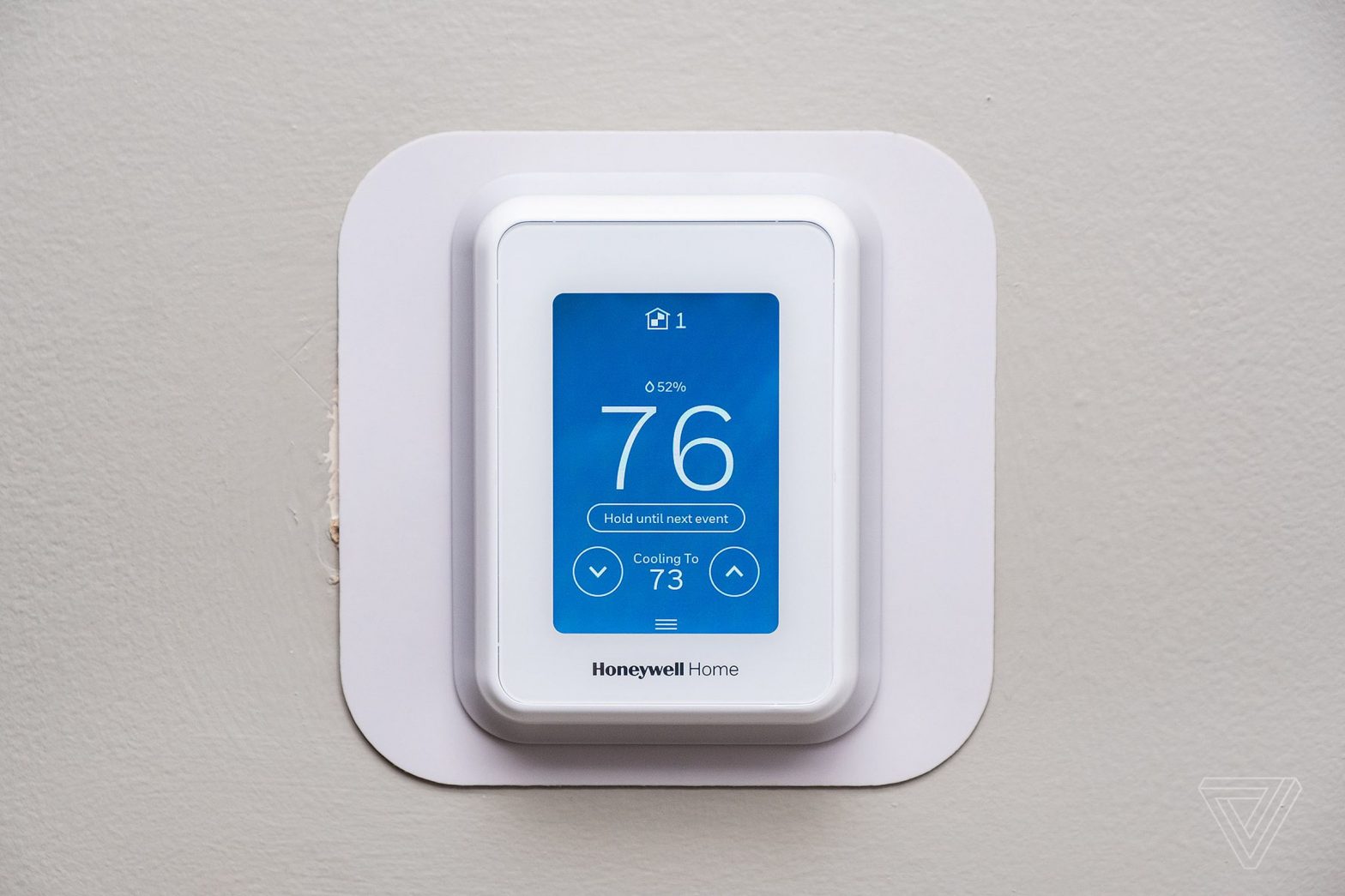/
Ford is partnering with smart thermostat maker Resideo to use energy stored in your EV to heat and cool your home.
Share this story
If you buy something from a Verge link, Vox Media may earn a commission. See our ethics statement.
:format(webp)/cdn.vox-cdn.com/uploads/chorus_asset/file/18287867/dseifert_190705_3501_5339.jpg)
Smart homes can already help us charge our EVs more efficiently, but using an EV to power our smart homes is still largely sci-fi. However, a new partnership between Ford and Resideo (maker of Honeywell Home smart thermostats) may be a glimpse into that future. Today, the companies announced the EV-Home Power Partnership, a project that’s exploring using Ford’s F-150 Lightning electric pickup truck to power your HVAC via a smart thermostat during peak hours, saving homeowners money while reducing pressure on the grid.
The simulation project will test the concept of vehicle-to-home (V2H) energy management by integrating Ford’s truck with a Resideo smart thermostat, such as the Honeywell Home T9. Using the bidirectional charging capabilities of the F-150, the project will “explore the potential of electric vehicle batteries to support optimal home energy management.” Work has already begun and is expected to be completed in the first half of 2024.
The idea is that when there’s a surge in demand for electricity and time-of-use prices peak, your Resideo thermostat can tap into the battery in your Ford truck to power your HVAC. The benefit is that you won’t need to choose between turning down the AC or paying a premium to stay cool in the summer (or warm in the winter); plus, if enough people do this, energy companies won’t need to bring on extra power plants to support demand.
While this project is limited to the F-150 Lightning and Resideo thermostats, it’s easy to see a future for wider adoption if it’s successful. Smart thermostats from Ecobee and Nest already work with demand response programs, and EV manufacturers such as Nissan and Kia are already testing V2H energy management. GM has said all of its EVs will have V2H bidirectional capability by 2026.
:format(webp)/cdn.vox-cdn.com/uploads/chorus_asset/file/25140676/1701920913987.jpeg)
“The two largest contributors to an individual’s carbon-emission footprint are usually their car and the heating and cooling of their home,” Dana Huth of Resideo said in a press release. “With this EV Power Partnership project, we can discover new ways for F-150 Lightning owners to utilize their EV battery to power their home’s heating and cooling and to help build a home energy management strategy that can optimize their home’s comfort and energy use.”
Today, less than 15 percent of homes have smart thermostats, and less than 7 percent of light-duty vehicles sold in the US are EVs, but this type of integration is clearly something these industries are working toward.
While there are already software-powered integrations from companies like Schneider Electric, Savant, and Lunar that can manage energy stored in an in-home battery to reduce your reliance on the grid when prices are high, these often require special — and expensive — equipment such as smart load panels. Plus, in-home batteries are even further from widespread adoption than EVs.
However, while bidirectional power from EVs makes a lot of sense during power outages, it seems less efficient as a daily energy management solution. With range anxiety still a real fear, the idea of hooking your precious EV battery up to your HVAC system is clearly a cause for concern. You don’t want to run out of charge on your way to the grocery store because you saved a few cents on cooling your home that morning.
There’s also the worry of degrading the battery. Hopefully the project will be looking into all of these potential issues. If it can find some solutions, it could be a significant step toward a real symbiosis between our smart homes and our smart cars.
